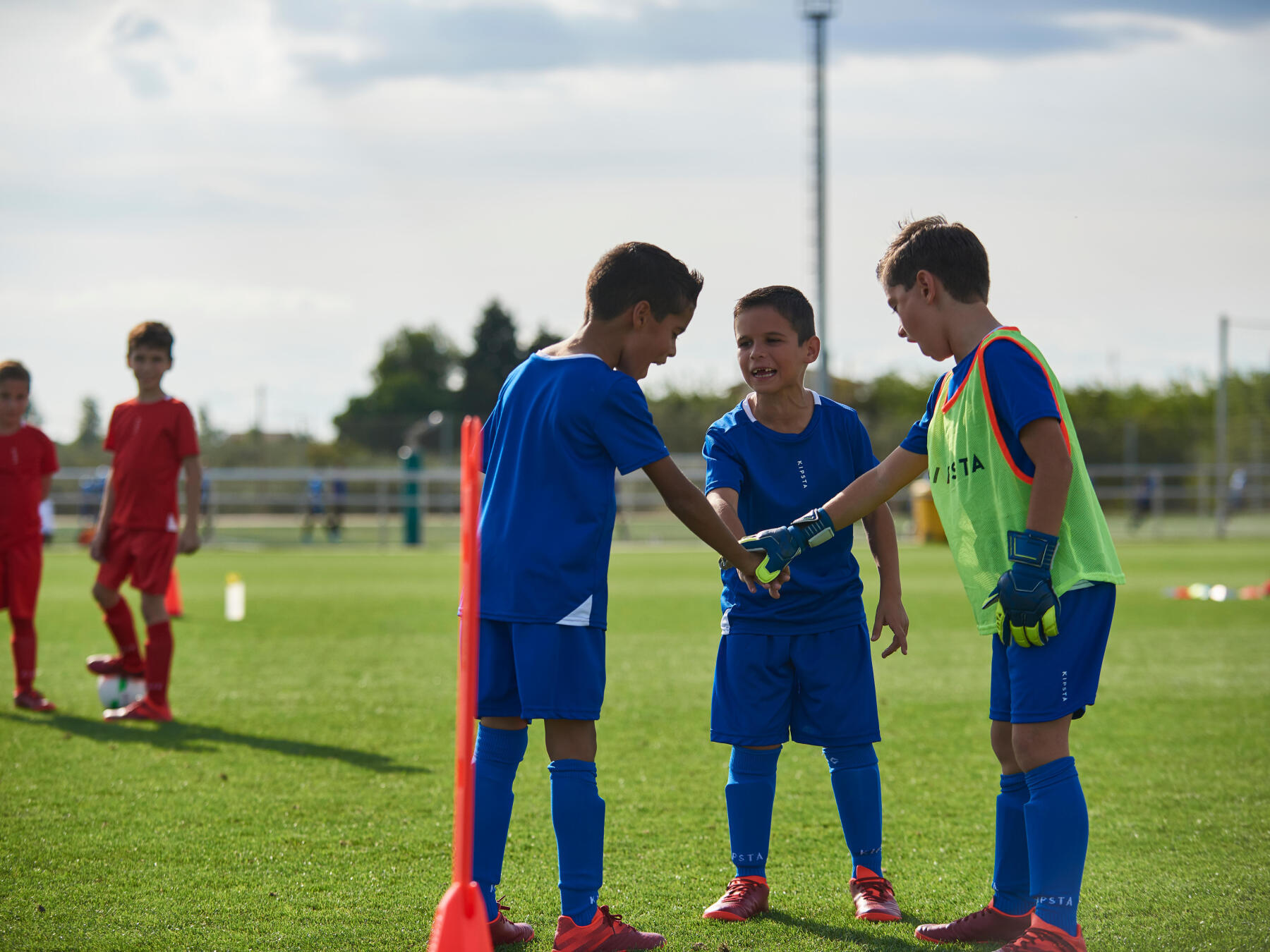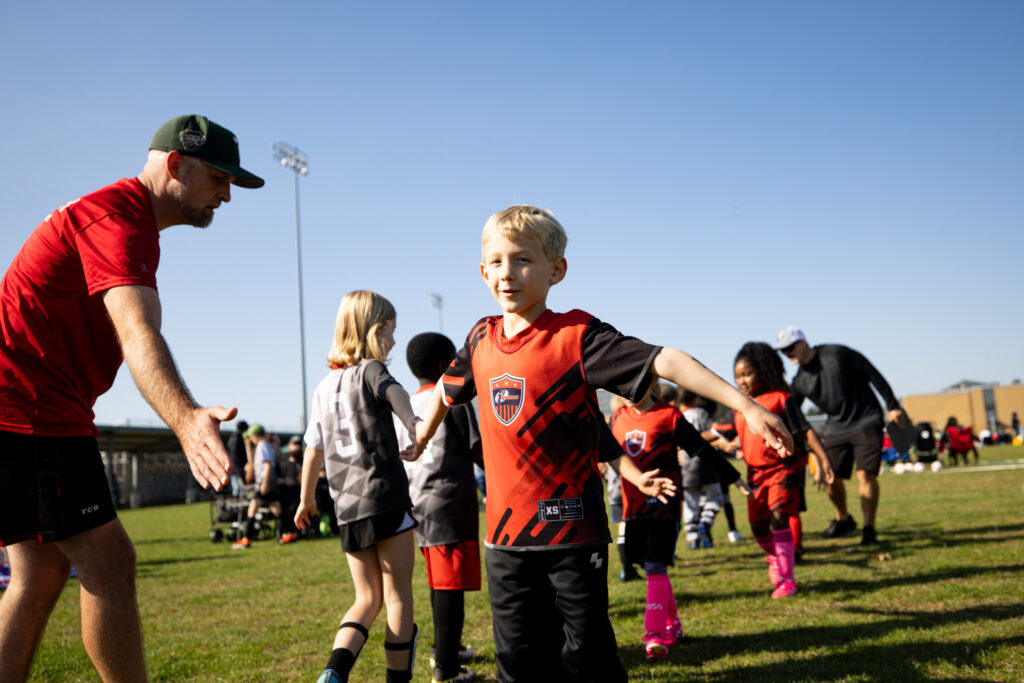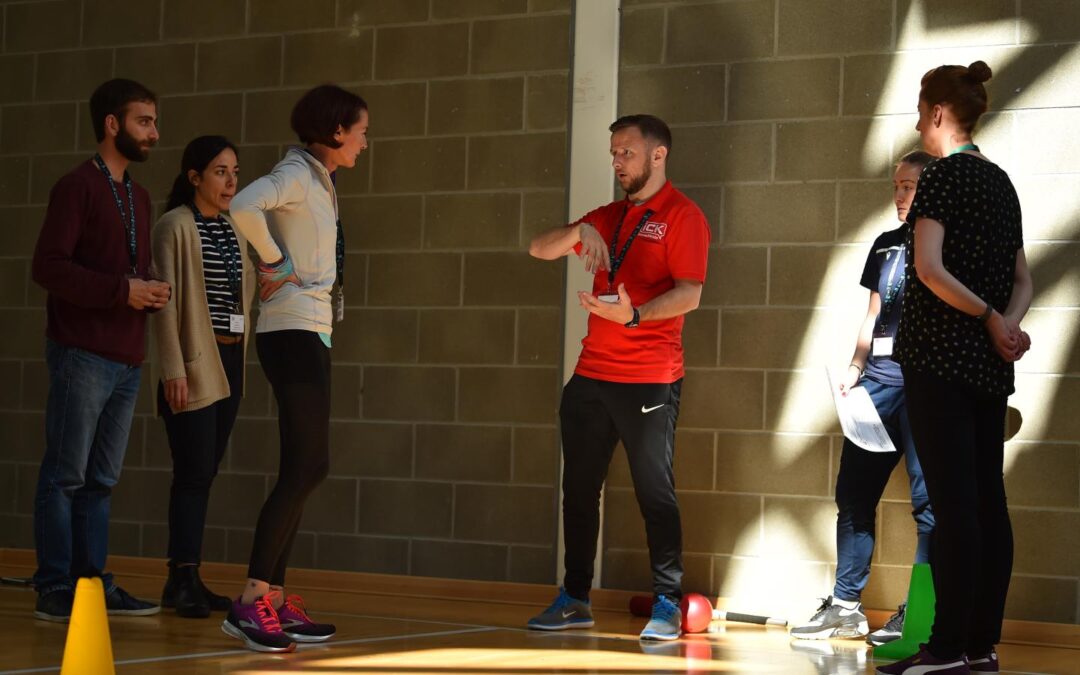Watching my child light up on the field or court is priceless, but the cost of youth sports can add up fast. Between registration fees, gear, and travel, it’s easy to feel overwhelmed and wonder if it’s possible to keep up without breaking the bank.
I’ve learned that with a little creativity and planning, youth sports can fit into almost any budget. There are plenty of ways to save money while still giving kids the chance to play, grow, and enjoy the game. Let’s explore practical tips that make youth sports affordable for families like mine.
Understanding the Costs of Youth Sports

Understanding-the-Costs-of-Youth-Sports
Understanding youth sports costs helps me plan and save more effectively. I track these expenses to stay within my budget and avoid surprises during the sports season.
Common Expenses to Consider
Common expenses for youth sports cover registration, equipment, uniforms, coaching, and facility usage. Registration fees often range from $50 to $500 per season depending on the sport and league. Equipment costs vary by sport; for example, basic soccer gear—cleats, shin guards, and a ball—can total $60 to $150, while ice hockey equipment frequently exceeds $400. Uniform fees usually reach $50 to $100 per season. Coaching and facility fees add up when teams hire specialists or practice in rental spaces, sometimes doubling seasonal expenses.
| Expense Type | Typical Range (USD) | Example Sports |
|---|---|---|
| Registration | $50 – $500 | Soccer, baseball |
| Equipment | $60 – $400+ | Soccer, hockey |
| Uniforms | $50 – $100 | Basketball, softball |
| Coaching/Facility | $100 – $500 | Gymnastics, swimming |
| Travel | $50 – $600+ | Club teams, tournaments |
Hidden Fees and Unexpected Costs
Hidden youth sports fees emerge during travel, tournaments, team activities, mandatory fundraisers, and photo packages. Tournament entry fees often demand additional $100 to $200 per family for each event. Out-of-town competitions create hotel, meal, and transportation charges overlooked in basic budgeting. Team parties or celebrations frequently require extra contributions. Fundraisers might be mandatory, requiring upfront costs for buy-ins or unsold product minimums. Photo packages or custom memorabilia add unplanned $25 to $80.
| Hidden/Unexpected Cost | Typical Range (USD) | Example Context |
|---|---|---|
| Tournament Travel | $100 – $600+ | Regional competitions |
| Team Events/Parties | $20 – $75 | End-of-season celebrations |
| Fundraiser Buy-Ins | $25 – $100 | Raffles, candy sales |
| Photo Packages | $25 – $80 | Team photos/memorabilia |
Strategies for Saving on Sports Participation
I lower youth sports costs using multiple strategies that keep my child active while protecting my budget. I focus on sport selection, community resources, and financial planning to minimize expenses.
Choosing the Right Sport for Your Budget
I compare sports by upfront fees, equipment demands, and local availability before enrolling my child. Sports with lower total costs—like running, soccer, and basketball—require minimal gear and often offer school- or recreation-based teams at reduced fees. Sports such as hockey or gymnastics cost more due to required specialized gear and facility rentals. If costs become prohibitive, I research community leagues and school programs offering financial assistance or equipment rental.
| Sport | Avg. Registration Fee (USD) | Typical Gear Cost (USD) | Community/School Program? |
|---|---|---|---|
| Soccer | 50–150 | 40–100 | Yes |
| Basketball | 60–200 | 50–120 | Yes |
| Baseball | 70–300 | 75–250 | Yes |
| Running | 30–80 | 30–90 | Yes |
| Hockey | 150–500 | 250–500+ | Limited |
| Gymnastics | 150–400 | 60–200 | Limited |
Leveraging Community and School Programs
I enroll my child in sports through local schools and community centers to access low-cost, inclusive opportunities. Community programs, such as those offered by YMCA or town recreation departments, lower barriers with smaller registration fees and access to shared equipment. Schools provide structured athletic programs with minimal added costs, especially for students qualifying for reduced or free lunch. I register early to take advantage of discounts and ensure placement before teams fill up.
| Program Type | Avg. Registration Fee (USD) | Equipment Provided? | Scholarships/Grants |
|---|---|---|---|
| School Team | 0–80 | Partial/Yes | Yes |
| Community League | 30–120 | Limited/Yes | Yes |
| Nonprofit Program | 0–75 | Yes | Yes |
I supplement savings by using equipment exchange programs, applying for community grants, carpooling to practices, and seeking early-bird registration offers. These choices keep youth athletics affordable without sacrificing participation quality or access.
Maximizing Value with Creative Solutions

Maximizing-Value-with-Creative-Solutions
Maximizing value in youth sports means seeking practical strategies that support participation while controlling expenses. I focus on approaches that use community resources, collaboration, and flexible spending for my child’s sports journey.
Buying and Selling Used Equipment
Buying and selling used equipment lowers sports costs. I find quality gear on Facebook Marketplace, Craigslist, and Play It Again Sports, usually for 40% to 70% less than new retail prices. Community gear swaps allow me to trade my child’s outgrown items for appropriately sized equipment. Donating or reselling used gear further stretches my budget and helps other families afford sports.
| Source | Estimated Savings (%) | Context Example |
|---|---|---|
| Facebook Marketplace | 50–70 | Cleats, bats, gloves, pads |
| Play It Again Sports | 40–60 | Hockey sticks, soccer balls, helmets |
| Community Gear Swaps | 100 (swap value) | Used uniforms, shin guards, mitts |
Organizing Carpooling and Shared Resources
Organizing carpooling and sharing resources cut both transportation and time expenses. Carpooling to practices and games with nearby families reduces my travel costs by up to 60%. For tournaments requiring overnight stays, I secure group hotel rates, saving 15%–25% per room. I coordinate snack duties with other parents, rotating responsibilities instead of individually purchasing refreshments for every event.
| Shared Resource | Typical Savings (%) | Practical Example |
|---|---|---|
| Carpooling Fuel Costs | 50–60 | Rotating rides to weekly practices |
| Group Hotel Booking | 15–25 | Bulk reservations at tournaments |
| Snack Rotation | 100 (shared burden) | Weekly parent snack schedule |
Collaboration with local leagues and other parents maximizes value by leveraging creative solutions for every stage of youth sports participation.
Fundraising and Financial Assistance Options
Fundraising and financial assistance play a key role in managing youth sports expenses. I use local resources and team-focused strategies to make participation possible on any budget.
Exploring Local Grants and Scholarships
Local grants and scholarships lower the cost of youth sports entry. I search community foundations and national organizations that fund registration, equipment, and sometimes travel. Many school-affiliated and league programs provide scholarships based on need or talent—application deadlines and requirements differ substantially. A typical grant process involves submitting financial documents, program details, and a statement about the community impact.
| Grant/Scholarship Type | Eligibility Criteria | Typical Support Provided | Example Source |
|---|---|---|---|
| Local Foundation Grant | Income & residency | Registration fee + equipment | YMCA, Boys & Girls Clubs |
| League/Club Scholarship | Participation & financial need | Full or partial fee waiver | Little League, US Youth Soccer |
| National Organization Sponsorship | Athletic talent or need | Travel, uniforms, tournament entry | Sports Matter (DICK’S) |
| Government Recreation Assistance | Resident, public program | Sliding scale fees | Local Parks & Recreation |
Effective Fundraising Ideas for Teams and Families
Targeted fundraising covers key expenses in youth sports. I prioritize approaches based on team talents and local partnerships rather than low-return activities. Team-organized tournaments, gear swaps, and community events raise substantial funds when paired with outreach to local businesses for sponsorships or donations. Crowdfunding platforms add flexibility—multiple families can contribute or share campaigns broadly.
| Fundraising Method | Potential Earnings | Typical Costs | Example Activity |
|---|---|---|---|
| Crowdfunding | $500–$2,500 | Platform fees | GoFundMe, RallyMe |
| Community Tournament | $1,000–$5,000 | Facility rental | 3v3 basketball tournament |
| Gear Swap Event | $100–$400 | Promotional | Resell gently used gear |
| Sponsorship/Donations | $250–$5,000 | None | Local business sponsor banners |
| Charity Event | $300–$2,000 | Venue & setup | Fun run, silent auction |
I use these fundraising and assistance strategies to reduce my family’s out-of-pocket expenses and expand access to sports for others in my community.
Building a Budget-Friendly Sports Mindset

Building-a-Budget-Friendly-Sports-Mindset
Developing a budget-friendly sports mindset means approaching youth sports with planning, resourcefulness, and focus on essentials. I minimize costly distractions by prioritizing value and long-term growth.
Teaching Kids Financial Responsibility Through Sports
Teaching kids financial responsibility through sports starts with open conversations about budgets and expenses. I involve my child in decisions like choosing between used or new gear, comparing recreational league fees, or setting savings goals for the season. When teams organize fundraising events or community service, my child participates, learning that effort lowers costs. Many leagues provide scholarships, payment plans, or fee waivers; I always inquire about these options to maximize affordability.
Typical Youth Sports Cost Categories
| Category | Typical Range (USD) | Cost-Saving Examples |
|---|---|---|
| Registration Fees | $50–$500/season | Community leagues, early bird rates |
| Equipment | $20–$250+ | Used gear, equipment swaps |
| Uniforms | $15–$100 | Team donations, bulk purchasing |
| Travel | $0–$300+ | Local leagues, carpools |
| Fundraisers | $0–$100 | Team-organized events |
Focusing on Fun and Skill Development Over Expensive Extras
Focusing on fun and skill development over expensive extras guides my decisions. I sign my child up for free clinics, community workshops, or after-school sports programs that support growth without high costs. If private lessons or specialty camps appear unnecessarily expensive, I prioritize steady practice and positive experiences instead. Instead of high-end gear or travel teams early on, we use basic equipment and concentrate on making sports enjoyable.
Affordable Options for Growing Skills
| Program Type | Typical Cost | Benefit |
|---|---|---|
| Community sports clinics | Free–$40 | Basic skill-building and fun |
| School-based sports programs | Free–$100/season | Low barrier, structured environment |
| Local league registrations | $50–$250/season | Competition, social development |
| Team voluntary activities | No fee | Teamwork, reduced participation costs |
By anchoring my sports budgeting strategies on financial responsibility and purposeful skill-building, I create a sustainable, rewarding experience for my child.
Conclusion
Making youth sports affordable isn’t always easy but it’s absolutely possible with a bit of planning and creativity. I’ve found that focusing on what matters most—my child’s joy and growth—makes it easier to navigate the financial side.
By staying resourceful and open to community support I can give my child the chance to play and learn without breaking the bank. It’s all about finding smart ways to stretch every dollar while keeping the experience fun and meaningful for the whole family.
Frequently Asked Questions
What are the main costs involved in youth sports?
The main costs include registration fees, equipment and gear, uniforms, coaching, facility usage, travel expenses, tournament entry fees, team events, mandatory fundraisers, and photo packages. These expenses can vary widely depending on the sport and level of participation.
How much does it typically cost to enroll a child in youth sports?
Registration fees usually range from $50 to $500 per season. Additional costs such as equipment, uniforms, and travel can add hundreds more, depending on the sport and league.
What hidden or unexpected costs should families be aware of?
Families should watch out for hidden costs like tournament fees, travel expenses, team events, required fundraisers, and photo packages. These can quickly add up beyond the core registration and equipment fees.
Are there sports that are generally more affordable for children?
Yes, sports with lower equipment demands, like running, soccer, and basketball, are usually more affordable. Community leagues and school-based sports often offer the best value.
How can families save money on youth sports equipment?
Purchasing used equipment, participating in exchange programs, and using platforms like Facebook Marketplace or community gear swaps can help families find quality gear at lower prices.
What community resources are available to help reduce youth sports costs?
Families can join community leagues, school programs, or local nonprofits, many of which offer financial assistance, equipment rentals, and scholarship opportunities to help reduce overall costs.
How can carpooling and sharing resources help manage sports expenses?
Carpooling reduces transportation costs and time commitments for families. Sharing resources, like team gear or carpooling for practices and games, can lower overall expenses for everyone involved.
What financial assistance options exist for youth sports participation?
Many leagues and organizations offer scholarships, grant programs, or reduced fees based on financial need. Local foundations, national organizations, and team-based sponsorships are common sources of assistance.
What are some effective fundraising ideas for youth sports teams?
Popular fundraising options include hosting community events, seeking local business sponsorships, organizing team car washes or bake sales, and leveraging online fundraising platforms to cover key expenses.
How can families develop a budget-friendly approach to youth sports?
Families should prioritize needs over extras, compare costs across sports, seek out community programs, budget for each season, and involve children in financial decisions to promote responsibility and long-term affordability.
Why is it important to focus on fun and skill development rather than costly extras?
Prioritizing fun and skill-building helps children enjoy sports without unnecessary pressure or expenses. Free clinics, school programs, and community events can foster growth and enjoyment at a low cost.

